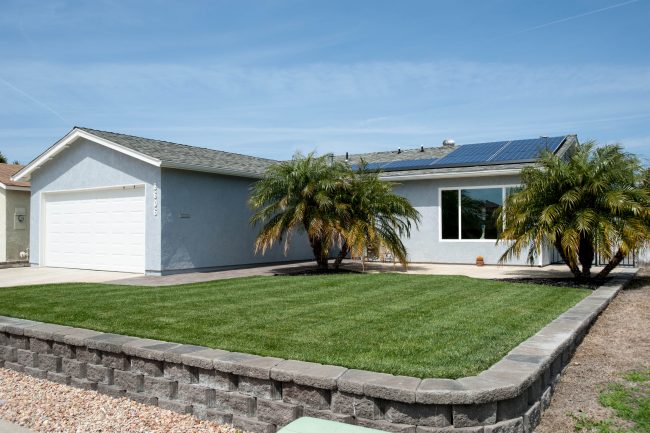
If you’re preparing to undertake a major renovation that includes multiple rooms, you’re entering prime territory for a green remodeling project. Why? The answer is “whole systems building.” In other words, the greenest project possible is a remodel that is designed Green from the Ground Up. It ensures that everything from the flooring you choose on up to the insulation you install in your attic and everything in between works together to create the most energy-efficient, health-oriented, comfortable, and environmentally responsible remodel possible.
Choosing the Right Shade of Green for Your Major Renovation
And what if you’re not sure about going green through and through? No problem there, either. Any step you take in a green direction while designing and building your renovation is going to be beneficial to your project, be it increasing insulation levels, installing energy-efficient windows, or using safer, healthier building materials. While whole systems building is far and away the greenest way to go, it’s certainly not the only option when it comes to incorporating green remodeling into your major renovation project.
Cost vs. Value and Green Remodeling
All major remodeling projects hinge on a budget, and most homeowners facing a major renovation of multiple rooms are rightfully concerned with how much going green might increase project costs. The truth is that it’s hard to pin an exact figure on the price of going green. The level of green that each homeowner is willing to commit to varies, as do the individual specifications of a project as wide open as a multiple room renovation. What we can tell you is this:
- Green remodeling doesn’t always mean higher initial costs. Most green building materials are cost-competitive, and in many instances, they’re even cheaper than traditional materials.
- Green building practices often result in quicker build times, which translates to cheaper labor costs.
- Green remodeling is guaranteed to reduce energy costs— now and in the long term. With the price of energy on the rise, a more energy-efficient home will save you money over the long haul.
- Determining the true value of a green remodel means shifting your focus beyond dollars and cents.
This last point is an important one. Green remodeling places an emphasis on creating healthier indoor living areas; it utilizes long lasting, low-maintenance building materials; and going green is committed at every turn to environmental responsibility. While it’s hard to assign a specific dollar amount to such things, few homeowners can deny the high value of healthier families, time saved by eliminating regular maintenance chores and repairs, and the peace of mind that comes with knowing that you’ve done everything you can to pass a better world onto your children and grandchildren.
Increasing Energy Efficiency and Reducing Energy Costs with Green Remodeling
For obvious reasons, reducing energy costs is a big selling point when it comes to going green with a major renovation. Homeowners across the country are feeling the pinch of rising energy costs, and it’s a phenomenon that doesn’t look to go away any time soon. Here’s a list of green energy saving solutions that will benefit you and your home just as much 20 years down the road as the day your major renovation is completed.
- Install low-e, multiple paned windows with wood or vinyl frames. Energy-efficient windows are one of the best ways to increase energy efficiency and reduce energy costs.
- Design with natural air movement and sunlight in mind. The proper placement of windows increases natural lighting, allows for natural cooling and ventilation during spring, summer, and fall, facilitates passive solar heating in the winter, and reduces the heating effects of sunlight during summer months.
- Install a whole house fan. Running a whole house fan costs a fraction of the cost of air conditioning. They are a good supplement to air conditioners in hot climates, and can eliminate the need for air conditioning altogether in milder ones.
- Install skylights, solar tubes, light shelves, and clerestory windows. All increase natural lighting in your home, so you’ll have to use less artificial lighting.
- Use compact fluorescent bulbs. They use 75 percent less energy than incandescent bulbs, and last 10 times as long.
- Install window awnings and plant deciduous trees outside East and West facing windows. Doing so creates natural shade for your home, and prevents unwanted heat gain during summer months.
- Use structural insulated panels (SIPs) with an insulating foam core for exterior walls, ceilings, and floors. SIPs drastically increase the energy efficiency of your home, reduce noise pollution, speed up installation time (which means cheaper labor costs), and you’ll save wood by using less raw materials.
- Insulate as much as possible. Advanced framing techniques, combining rigid foam insulation on the exterior with traditional wall insulation, and ensuring proper attic insulation are all surefire ways to increase your home’s energy efficiency. And while you’re at it, it doesn’t hurt to improve insulation in the rest of your home while you are remodeling, either.
- Caulk, seal, and weatherstrip. Good insulation practices focus on sealing up every conceivable point of heat and cooling loss to further reduce energy consumption and maximize energy savings.
- Install low flush toilets and low flow shower heads and faucets in bathrooms. You can cut water use at these fixtures by 60 percent or more by installing energy-efficient models.
- Upgrade your heating and cooling systems. Older furnaces and air conditioners are a prime culprit of high energy bills. If your HVAC systems are starting to get on in years, ENERGY STAR rated upgrades can save you bundles.
Ready to start your green renovation?
Find ProsGreen Solutions for Healthier Homes
It’s been estimated that an average American spends up to 90 percent of their life indoors in climate controlled environments, yet the EPA ranks indoor air pollution as one of the top five environmental risks to public health. The truth is that many harmful chemicals, including formaldehyde, vinyl chloride, and a host of other volatile organic compounds (VOCs) are among the many indoor air contaminants that traditional building materials release into your home on a regular basis. Green remodeling strives to reduce, or eliminate, the presence of these harmful contaminants as much as possible, creating a healthier environment for everyone that lives under your roof. Here are some proven green remodeling strategies that will ensure the indoor environment of your new home addition is as healthy as it can be.
- Use recycled-content fiberglass, rock wool, or cellulose insulation. Not only are these products environmentally friendly, but they don’t contain formaldehyde, a common additive to conventional fiberglass batt insulation and a known carcinogen.
- Use low- or no-VOC paints, sealants, and wood treatments. Many traditional finishing products (paints, stains, and sealants) that are used on walls, flooring, and in other applications, emit volatile organic compounds (VOCs) for long periods after being applied. Low- or no-VOC products keep these common indoor air contaminants to a minimum, or eliminate them altogether
- Install Forest Stewardship Council (FSC) certified wood flooring, bamboo, cork, natural linoleum, concrete, or stone and ceramic tile flooring. Avoid vinyl flooring, which emits vinyl chloride fumes (a known carcinogen), and think twice about carpet, which releases a host of toxins that off-gas from bonding materials, dyes, glues, fire retardants, binders, and anti-static and stain treatments.
- Make the most of windows and passive solar heating. Forced air heating stirs up dust and other particulates that can be a problem for allergy and asthma sufferers. The more you harness the natural heating capacity of sunlight, the less your furnace will have to run. Having a wealth of natural ventilation to fall back on doesn’t hurt, either.
- Install filters on faucets and showers. Investigate your local water quality first, however, since different filters meet different needs.
- Ventilate your home properly. Poor ventilation can lead to moisture and mold problems, especially in high moisture areas like bathrooms and kitchens. Mold tops the list of harmful indoor air contaminants, and has been linked to everything from allergies and asthma to more serious ailments of the immune and nervous systems.
Comfortable, Low-Maintenance, Long Lasting Green Home Renovations
Don’t be scared away from green remodeling by visions of clumsy looking straw bale homes, or ramshackle residences built from recycled scrap lumber and other foraged materials. That may have been the rule 30 years ago, but modern green building practices are equal to, if not superior than, traditional ones. That’s largely the result of using longer lasting, lower maintenance materials, and placing a premium on comfort as well as quality. If those attributes sound appealing to you (and why wouldn’t they?), here are a few remodeling tips to consider as you design your major renovation.
- Install adequate insulation. Maximizing insulation, be it through traditional means or the use of structural insulated panels, means a warmer, more comfortable home. It also results in a quieter home, since insulation helps to reduce noise pollution.
- Make the most of natural lighting. More natural lighting means a more comfortable, pleasing, and inviting home environment.
- Tailor home lighting for individual spaces. It’s been proven that the better the lighting, the more productive you’ll be. In areas where you plan to spend a lot of your time, such as a home office, kitchen, or den, be sure to maximize natural lighting with windows, skylights, and solar tubes. Make sure to also install adequate artificial lighting— fluorescent and halogen lighting are good green options, as well.
- Install quality green flooring materials. FSC-certified wood flooring, bamboo, cork, and stone and ceramic tile flooring are all recognized as some of the most attractive, trendsetting flooring materials on the market. Even better: most are low-maintenance flooring products, as well.
- Energy efficiency = more comfortable home environments. Green renovations are warmer in the winter, cooler in the summer, and you’ll enjoy more consistent indoor temperatures year round.
Green Remodeling and Environmental Responsibility
While energy savings, healthier indoor environments, and more comfortable homes might be more immediate concerns for homeowners, at its heart green remodeling is about embracing building practices and living environments that are friendlier to the environment. And while it’s important to note that just about every tip mentioned above furthers that agenda, here are a few more things to chew on when it comes to designing major renovations that are models of good environmental stewardship.
- Use recycled building materials. Old lumber, trim, and door and window casings can all be reused if removed carefully. And if you’re willing to be flexible when it comes to design, perfectly good sinks, cabinet hardware, and ceramic and stone tile, for example, can all be purchased from retailers who specialize in reclaiming and recycling old building materials.
- Use materials manufactured with recycled content. Whether you install cellulose insulation made from recycled paper and cardboard, recycled content ceramic tiles, or recycled content asphalt roofing, choosing building materials that incorporate recycled content helps to reduce the amount of waste that ends up in landfills, and reduces overall energy consumption since these products require less energy to manufacture.
- Use Forest Service Council (FSC) certified wood. From flooring to framing materials, using only FSC-certified wood ensures that the lumber used in your major renovation has been harvested in a responsible, and sustainable, manner.
- Recycle construction and jobsite waste. A huge percentage of the construction waste currently sent to landfills could be re-used in future green remodeling projects.
- Increasing energy efficiency isn’t just good for your pocketbook. Any and all steps that you take to cut your home utility costs are beneficial for the environment by reducing your consumption of fossil fuels and the pollution that’s created when they’re converted to energy.
Are You Ready to Go Green?
Going green with your major renovation is a smart move from just about every angle. It will reduce energy costs, create healthier indoor environments, and the final product is a more comfortable, higher quality home. And, of course, it’s good for the environment, as well.
If you think green is the right choice for you, be sure to talk to your contractor about adopting a green building philosophy. Find a contractor who specializes in green building and remodeling or seek out the services of a green consulting firm to help you plan and design the best, and greenest, home addition possible.
 Environmental Home Remodeling: Recycling and Composting
Environmental Home Remodeling: Recycling and Composting 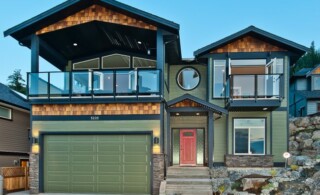 5 Green Renovation Terms
5 Green Renovation Terms 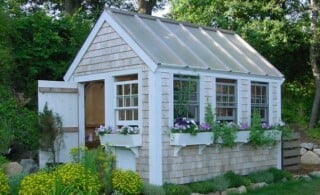 Tips for Starting a Home Composting System
Tips for Starting a Home Composting System 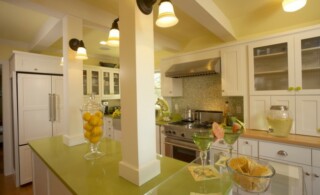 Green Appliances
Green Appliances 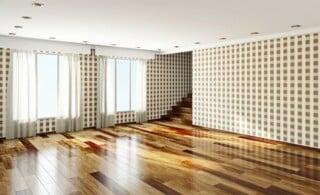 Can’t Afford to Remodel? Think Again!
Can’t Afford to Remodel? Think Again! 

Are You Familiar With This Topic? Share Your Experience.